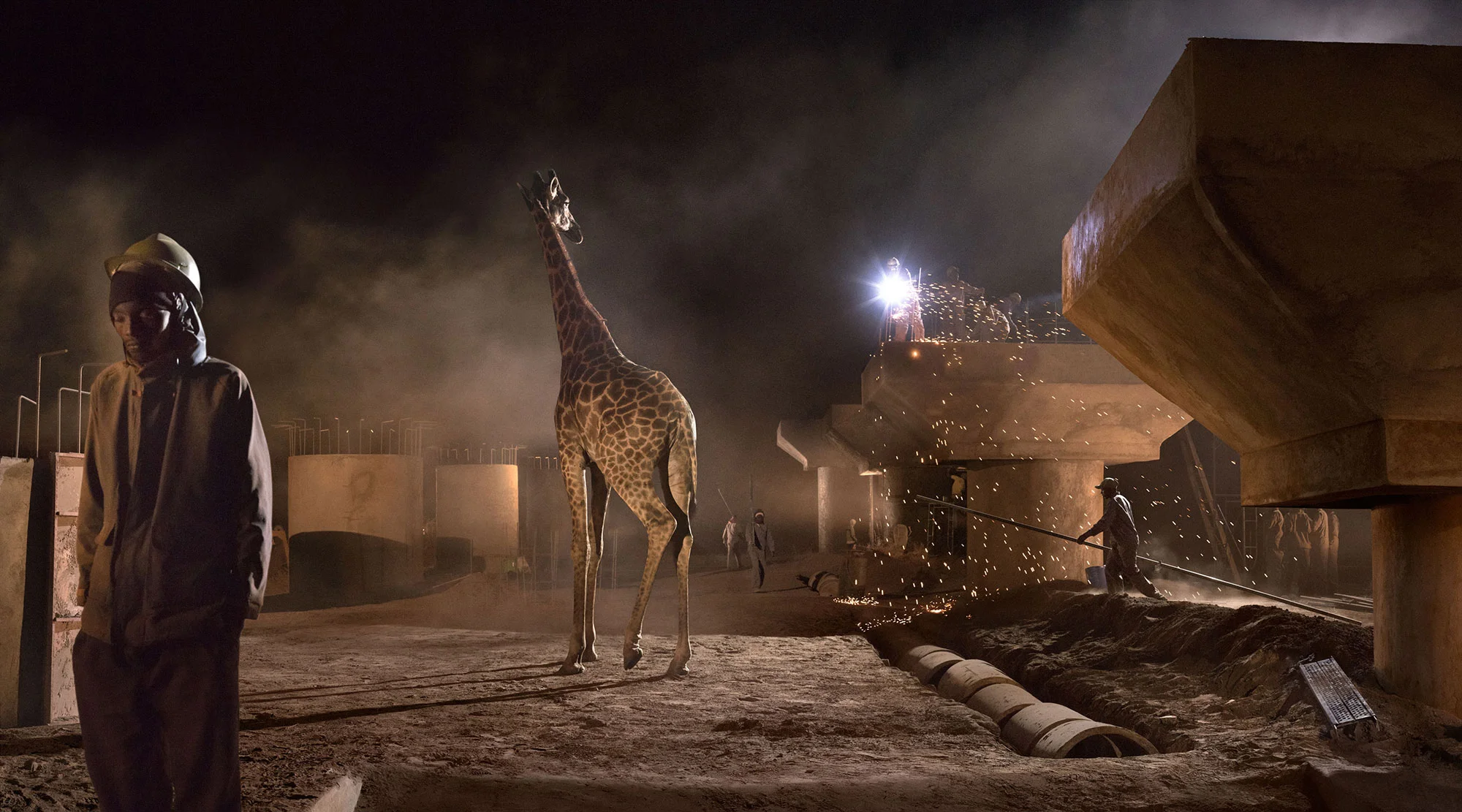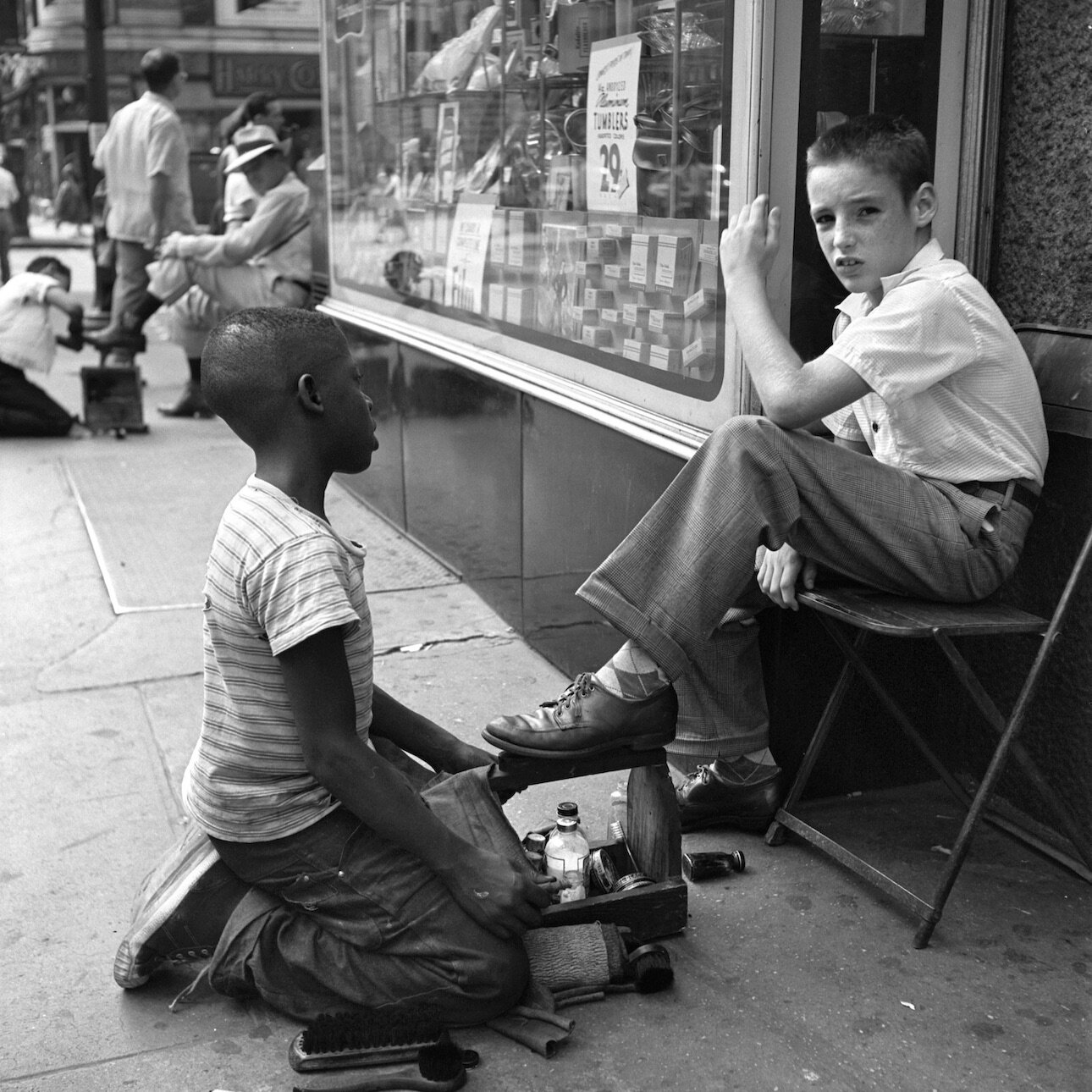Book Review: The Color Work
Location and date unknown (Man with Balloons), by Vivian Maier.
By Amy Schatz
A street photographer’s prerogative is vastly different from that of most other genre artists: She must above all be invisible, and use that physical and figurative inscrutability to her advantage. The photos in Vivian Maier’s The Color Work were collected without her knowledge and published after her death. In a sense, she embodies the paragon of a street photographer: anonymous while she lived, and gone before anyone could catch up to her.
Maier was born in 1926 in New York and worked most of her adult life in Chicago as a nanny. This is about the sum total of what is known about her life, aside from her trips to and from France with her family, and her travels between Chicago and New York. Though she never published any of the tens of thousands of photographs she took, she kept a vast number of her prints and negatives in a rented storage space; in 2007, when she failed to pay rent for the storage space, her belongings were auctioned off and purchased by an art collector. So began the discovery of one of America’s most prominent street photographers — but Maier died in 2009.
Location unknown, by Vivian Maier, 1960.
The Color Work is the first published collection of Maier’s color photographs, acquired originally by John Maloof and here curated by Colin Westerbeck. The photographs capture Maier’s ground-level interactions with the street traffic of New York, Chicago, and other cities abroad. She is irresistibly drawn to humor, we assume, based on images that show children struggling to fit into unlikely spaces, forced-perspective stills that create the illusion of shrunken heads or elongated torsos, and snapshots of cantankerous passersby. She is self-aware, to a degree, and conscious of her face and body, as the collection includes a sampling of self-portraits she captured in storefront windows and discarded glass shards.
Location and date unknown (Mary, Mary), by Vivian Maier.
One defining characteristic that encapsulates Maier’s work is an undeniable hand that leads us down crowded avenues, to waterfront benches and lounge chairs, through dimly lit alleyways, and into tight corners of busy produce markets. Her work is at once deeply personal, based on printed text and scribbles that capture her attention (“You sex happy bastard,” scrawled across a metallic surface in an unknown city in 1976), and simultaneously impersonal, due to the blurred faces and indifferent crowds drifting in the periphery.
Self-portrait, Chicago, by Vivian Maier, 1979.
Other images — perhaps the majority — defy explanation: Page 41, without the clarification of a location or date, presents the image of a black balloon salesman looking askance as gigantic, swollen balloons bob and sway around him. The man might be waiting for a bus or scouting for potential customers; his posture and expression might have changed moments after the picture was taken. Perhaps he posed for the picture, or perhaps he never wanted his picture taken in the first place. No amount of dutiful research can bring light to all of Maier’s images, but they do not beg for clarification. In their immense anonymity is a sweet, deeply personal nostalgia that speaks to the roamer in all of us.
New York City, by Vivian Maier. 1959
The Color Work was published by Harper Design, an imprint of Harper Collins.












